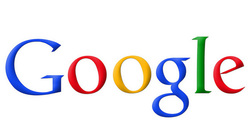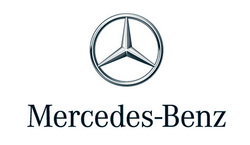|
A name can be described as "a word or set of words by which a person or an object is known, addressed, or referred to". However, it is so much more than just that. A name gives associations, meaning and flavour to a person, an object or a brand. It reminds of experiences and it will quickly give you certain emotions and connotations such as a good, bad or neutral gut feeling. So what’ is in a name? Actually, a lot, much more than you can imagine. Choosing a name for your company carefully is therefore one of the most important decisions you will make, especially for a start-up. Choosing a name can be a tricky thing if you don't know the relevant techniques. When you know the methods of developing a brand name it will be much easier for you to pick the right name for your company, one that makes you stand out from the crowd. To inspire you, let's explore some popular name techniques and examples of how world famous brands got their names. 1. Descriptive: A name that says what the company/brand does. Usually the company uses two different words to create one brand name.  China Mobile is a Chinese state owned telecommunications company that provides nationwide telecoms services. Other examples: Hoover, General Electric and Whole Foods. 2. Coined/Invented: Playful or poetically constructed names that are based on rhythm and the experience of saying them. It sounds like a word but have no dictionary meaning.  Google The name Google is a play on the word “googol” which is a mathematical term for the number represented by the numeral 1 followed by 100 zeros. This reflects the founders, Larry Page and Sergey Brins, mission to organize infinite amount of information on the web. Other examples: Yahoo, Bing and Accenture 3. Acronym: An abbreviation formed from the initial letters of other words and pronounced as a word.  IKEA is inspired by the founder’s initials “ Ingvar Kamprad”, the first letter of his family farm “Elmtaryd” and his birthplace “Agunnaryd”. Other examples: IBM, BMW and SAP 4. Evocative: Evocative brand names say nothing about what you do. Instead they evoke the positioning of a company or product through an unexpected, yet relevant hint or perception.  Victoria’s Secret. The company was founded by Roy Raymond based on the insight hat most men felt embarrassed when buying lingerie for their women. He set up a shop in Palo Alto in 1977 where men were suppose to feel comfortable in an American vision of an English boudoir. The brand was called Victoria’s Secret after Queen Victoria, who was the regent during a very repressed era in time. The name suggested a veil of respectability pulled over “secrets” hidden underneath. However, in marketing only to men, Raymond forgot that most of a women’s underwear is purchased by the women themselves. A new owner took over and in the 1990s the marketing and stores changed to have more appeal for women, leading to today’s success. Other examples: Virgin Airlines, Innocent Smoothies and Tropicana 5. Founders name/merged: Simply a name that consists of the founders names.  Mercedes-Benz. Karl Benz was a German innovator and founder of the motor company Benz & Cie in 1883. Benz largest rival was Daimler, another German motor company, founded by Gottlieb Daimler. One of Daimler’s business partners was Austrian investor Emil Jellinek who had a passion for motor sport. Jellinek was promoting, selling and racing in Daimler cars under the pseudonym “Mercedes”. Mercedes was the Spanish name of his young daughter, meaning, “grace”. Jellinek's racing success in the important Nice Week in 1901 led to an agreement with Daimler that gave name to a new innovative engine called Daimler-Mercedes. In 1926, Benz and Daimler merged and formed a new company called Daimler-Benz AG where a joint trademark was created - the famous three-pointed star – which still adorns Mercedes-Benz vehicles. Other examples: Adidas, Johnson & Johnson and Ericsson. 6) Real words: Names that are re-purposed words and work through a metaphor or indirect association. Such names cannot be generically descriptive as they wouldn’t be protectable trademarks. Can be difficult and expensive to trademark.  Apple: The name came from a driving conversation between the founders, Steve Jobs and Steve Wozniak. Steve Jobs was coming back from a visit to an “apple orchard” and suggested a name for their company – Apple Computer. They both tried to come up with technical-sounding names that were better, but couldn’t think of any good ones. Apple was so much better and that became the brand. Other examples: Orange, Fox and Amazon. 7) Compound: A name that is a hybrid, formed from two existing words, often with the first word receiving the main emphasis in pronunciation. An easy way to create new words with limitless number of possible combinations.  YouTube: The history of YouTube began in 2005 when the founders activated the Internet domain name "YouTube.com" and started to create a video-sharing website on which users could upload, share, and view videos. Other examples: Band Aid, LinkedIn, Face Book and Firefox. Naming process
With the above naming techniques in mind you can now start to create a name for your company. At Lavandel, we recommend using the following process: 1) Start by writing a brief with criteria’s and considerations for the new name. Use your vision, brand strategy and the market your company is operating within. 2) Conduct a creative name brainstorming consisting of key people who thoroughly understand your brand and vision. If you have a brand platform already, use it as a starting point as it should be aligned with the new name. 3) Define themes that are appropriate for your brand, based on your brand values and brand essence. Explore the different types and techniques of names (common are descriptive, evocative, coined/invented, compounds, associations, experiential, acronyms and merged/ founders name). All of those types can be included in your brainstorming as long as it supports your brand objectives. 4) Evaluate the names. To find a winning name you need to ask yourself the following questions: · Is it distinctive and unique? Connected to your brand essence? Does it differentiate you from other companies in the market? · Is it memorable? · Does it inspire your target audience? Is it simple and clear with positive connotations? · Is it easy to spell and pronounce? How does it sound? Is it short and concise? · Does it give appropriate associations? Does it mean something else in another language? Is it culturally neutral in a global context? · Does it have legs and longevity? Can it grow with your brand and be used for sub-brands? · Can it be protected? 5) Choose a name that can tell a story behind your company. The story can expand over time and enable your brand to stand out in the crowd. 6) When you have decided for a name it is necessary to trademark it in all current or future markets where you will operate. You also need to consider all digital channels where you need to own your name. 7) Time to launch and implement your new name across all channels. Be sure to have a plan for managing your brand long-term as this will be one of your key investments for future success. Image sources: Apple, Mercedes-Benz, Victoria's Sectret, IKEA, China Mobile, YouTube 25/2/2015 02:39:46 am
It only contains a mindset and that i really enjoyed it, the determination each morning when I see your blog very helpful.
Rosie Kropp
25/2/2015 05:27:46 am
Thanks for your comment and happy to hear that you enjoy the content of the blog. To inspire readers is what we thrive for! 26/8/2015 11:23:05 pm
I learned a lot from your post! Thanks for the informative article on naming. I appreciate your enumeration of all the different styles/techniques. The tips in the the last few paragraphs are also very helpful. All the trivia that you gave on all the well-known brands are also good bonuses!
Sarah
25/2/2015 05:46:54 am
Hi, great post about naming! I just started a small company with some friends and we are struggling to find a good name that we can register. Too many good names are already taken, appreciate your advice. Thanks
Rosie Kropp
25/2/2015 08:12:40 am
Hi Sarah, thanks for your feedback. To find a company name for your startup I recommend that you use the naming process mentioned in the blog post. It supports both a creative and strategic approach to create your company name.
Fahad K
27/2/2015 07:26:23 am
Hi, read with interest about company naming. My company have a wellknown local name but we want to expand international. Should we change name or keep it?
Rosie Kropp
23/3/2015 11:01:55 am
Hi Fahad, thank you for your comment. 14/5/2015 02:16:13 am
Because it is very broad, let me back another time to visit your blo, i did not get to see all the content of your blogg 2/12/2015 06:13:35 am
Name is powerful thing in branding.Its in unique get more value. 12/5/2016 03:08:22 am
The power of the name is the accepted and recognized form of the right and executed provision. It is the produced and analyzed tinge of the right and elevated teems. It is the performed and invited for all terms and al conditions. 8/9/2016 12:17:52 pm
I think google is the most known brand name in the world! Comments are closed.
|
AuthorRosie Kropp, Categories
All
Archives
March 2015
|

 RSS Feed
RSS Feed